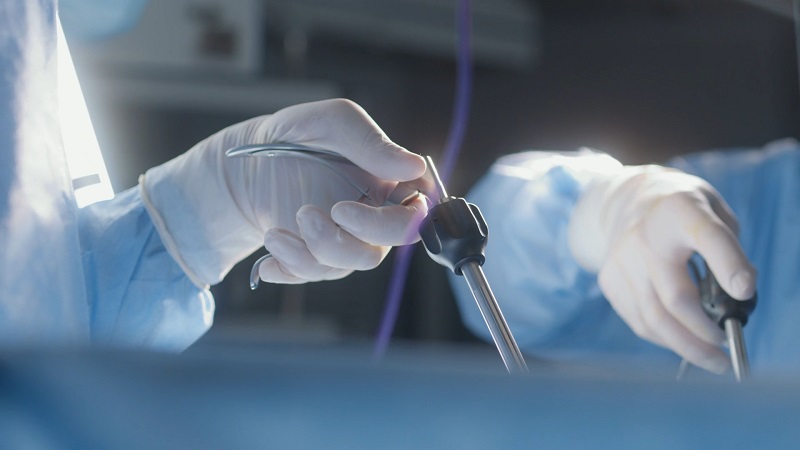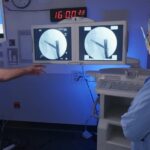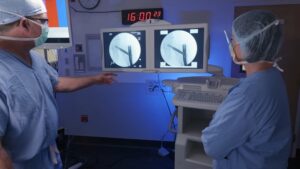The idea of big cuts, long hospital stays, and weeks of recovery isn’t easy to face. But thanks to medical advances, there’s now a less invasive option: minimally invasive surgery (MIS).
This type of surgery uses small cuts and special tools, often guided by a camera. It’s used for many procedures, from joint repairs to removing gallbladders or treating certain heart conditions.
For many people, it means less pain, fewer days in the hospital, and a faster return to normal life. Still, like all surgeries, it has risks and may not be right for everyone.
In this article, we’ll look at the pros and cons of minimally invasive surgery, what recovery is like, and what doctors have said about it — so you can make an informed decision.
What Is Minimally Invasive Surgery?
Minimally invasive surgery (MIS) is a modern surgical method that uses small incisions, thin instruments, and advanced technology — often including a camera — to perform procedures inside the body with less damage to surrounding tissue.
Unlike traditional open surgery, which typically requires large cuts to access the area being treated, MIS allows surgeons to operate with precision using only a few small entry points.
How It Works
- Tiny cuts: Most procedures use incisions less than an inch long.
- Special tools: Surgeons use thin, long instruments guided by video or imaging.
- Less tissue disruption: Muscles and skin aren’t pulled apart or cut as much as with open surgery.
- Faster process: Procedures are often shorter and require less recovery time.
“The goal is to minimize trauma to the body while achieving the same or better results than traditional surgery,” said Dr. Michael K. Rosenthal, a certified General Health physician.
Pros and Cons of Minimally Invasive Surgery
While MIS has changed the surgical experience for millions of patients, it’s important to understand both sides — the clear advantages and the situations where it may fall short.

Key Advantages
Less Pain and Scarring
Since the cuts are smaller, patients often report less post-operative pain and heal with minimal scarring.
Shorter Hospital Stays
Many minimally invasive procedures are done on an outpatient basis or with just one overnight stay.
Faster Recovery
Patients usually return to normal activities more quickly than with traditional surgery.
Lower Risk of Infection
Smaller incisions mean fewer chances for bacteria to enter the body.
“You may have less pain after surgery and a faster recovery compared to open surgery.” – Far North Surgery
Limitations and Risks
Not for Every Patient
People with complex conditions, previous surgeries, or certain health issues may still need open surgery.
Technical Demands
These procedures require specialized training and advanced equipment — not all hospitals or surgeons offer them.
Potential Complications
While the risk is lower, complications like bleeding, infection, or injury to nearby organs can still happen.
Common Types of Minimally Invasive Procedures
Minimally invasive surgery is used in many medical specialties. The techniques vary depending on the part of the body being treated, but they all follow the same principle: operate with minimal damage to healthy tissue.
Laparoscopy
Used in abdominal or pelvic surgeries. A thin tube with a camera (called a laparoscope) is inserted through a small incision. Surgeons can perform procedures like gallbladder removal, hernia repair, or gynecological surgeries with minimal access.

Arthroscopy
Common in orthopedics. Small incisions allow a camera and tools into a joint — usually the knee, shoulder, or hip — to diagnose and repair problems like torn ligaments or cartilage damage.
Endoscopy
Involves inserting a flexible tube through the mouth, nose, or other natural openings to examine or treat areas like the digestive tract or airways. No cuts are needed in many cases.
Robotic-Assisted Surgery
Surgeons control robotic arms from a console. The system allows for very precise movements in tight spaces, often used in urology, gynecology, and general surgery.
Endovascular Surgery
Used in treating blood vessels. A catheter is guided through the vascular system to repair issues like aneurysms or blocked arteries, often avoiding open vascular surgery altogether.
Who Is a Good Candidate for MIS?
Minimally invasive surgery isn’t for everyone. Doctors make the decision based on the condition, overall health, and previous medical history.
Candidates Likely to Benefit
- Patients needing procedures that don’t require wide surgical exposure.
- Those with low to moderate surgical risk.
- People seeking faster recovery and reduced downtime.
May Not Be Recommended For
- Individuals with extensive scar tissue from previous surgeries.
- Patients with certain complex or emergency conditions.
- Those with underlying health issues that require more direct access.
Note: Final suitability is determined after imaging studies, lab tests, and consultation with a surgical team.
What to Expect: Before, During, and After Surgery

Understanding the process helps reduce anxiety and sets clear expectations. Here’s a general overview of what patients typically experience when undergoing minimally invasive surgery.
Before Surgery
- Evaluation: The doctor will review your medical history, order imaging (like MRI or CT scans), and check for any conditions that might increase surgical risk.
- Instructions: You may be asked to fast for several hours before the operation and to stop taking certain medications temporarily.
- Consent and Prep: You’ll receive details about the procedure, risks, and recovery. Consent forms must be signed, and pre-op preparation (like shaving or cleansing the surgical area) will be done.
During Surgery
- Anesthesia: General or local anesthesia is administered, depending on the procedure.
- Small Incisions: The surgeon creates one or more small incisions to insert instruments and a camera.
- Live Guidance: A video monitor displays the internal area in real time, guiding the surgeon’s tools with precision.
- Efficiency: MIS typically takes less time than traditional surgery, depending on the complexity.
After Surgery
- Recovery Room: You’ll be monitored as the anesthesia wears off.
- Short Stay: Many patients go home the same day or after a short hospital stay.
- Pain Management: Over-the-counter pain relief is often enough, and discomfort is generally mild.
- Follow-Up: You’ll receive instructions on wound care, activity restrictions, and follow-up appointments.
Minimally Invasive vs. Traditional Surgery
| Aspect | Minimally Invasive Surgery | Traditional Open Surgery |
|---|---|---|
| Incision Size | Small (usually under 1 inch) | Large (often several inches) |
| Tissue Disruption | Minimal; muscles and skin are preserved | More significant; tissue is pulled or cut |
| Hospital Stay | Often same-day or 1–2 days | Typically longer (3+ days) |
| Recovery Time | Faster (a few days to weeks) | Slower (weeks to months) |
| Pain and Scarring | Less pain, smaller scars | More discomfort, visible scars |
| Equipment | Specialized tools, often camera-assisted | Standard surgical instruments |
| Suitability | Depends on the procedure and patient condition | Still necessary for complex or emergency cases |
FAQs
How do I know if I’m eligible for minimally invasive surgery?
Your doctor will evaluate your condition, medical history, and imaging results. Not all procedures or patient situations are suited for MIS.
Is recovery really faster with minimally invasive surgery?
Yes, in most cases. Patients often return to normal activities sooner than they would after open surgery, with less pain and a lower risk of infection.
Are there any hidden risks?
Like all surgeries, MIS carries risks such as infection, bleeding, or reactions to anesthesia. Complications are rare but possible.
Is minimally invasive surgery more expensive?
It depends on the hospital, equipment, and insurance coverage. In some cases, the overall cost is lower due to shorter hospital stays and quicker recovery.
Does it leave scars?
There will be some scarring, but typically very small. Many patients find them barely noticeable over time.
Final Thoughts
Minimally invasive surgery has changed the way many common procedures are performed. For eligible patients, it can mean a faster recovery, less pain, and fewer complications. But like all medical decisions, it should be made with guidance from a qualified healthcare provider.
Always discuss your options openly with your doctor, ask questions, and weigh the benefits and risks specific to your situation.
Related Posts:
- How to Relieve Acid Reflux Naturally - 5 Tips and Tricks
- Top 6 Money-Saving Tips on Prescription Medications…
- How to Choose the Right Healthcare Career Path - 17…
- List Of Foods to Avoid for a Smooth Recovery After…
- Spondylolisthesis Surgery - What are the Risks and…
- What to Eat and What Not- After Appendix Removal Surgery















